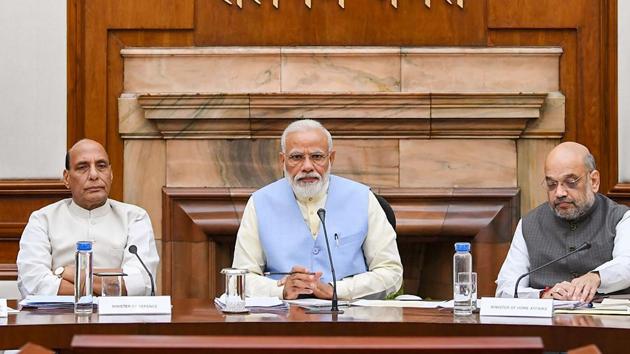What makes the Cabinet committees so significant
The body has representation from allies like, for instance, the Akalis and Shiv Sena in the Modi government, which has made it large and unwieldy, according to officials in the know.
1. What’s the big deal about the Cabinet Committee on Political Affairs, or CCPA?

The CCPA has important functions, such as taking decisions on Centre-state relations or economic issues with political implications or policy matters concerning foreign affairs, but the real reason for the emphasis on CCPA and who is in or out of it lies elsewhere. The CCPA is the body that is empowered to take decisions if, for some reason, the PM cannot be reached. This was a possibility in the 60’s, 70’s and the 80’s, when the PM could have been travelling abroad and beyond contact. At that time, the committee could take a decision on a sensitive matter and, once the PM was back, seek his approval on it. But now, with advancement in technology, this requirement has lapsed. However, even when former PM Manmohan Singh was away but reachable, Pranab Mukherjee would often hold meetings. Will current home minister Amit Shah do the same? The CCPA could take more sensitive decisions when the government was not a coalition. The body has representation from allies like, for instance, the Akalis and Shiv Sena in the Modi government, which has made it large and unwieldy, according to officials in the know.
2. How powerful are the cabinet committees?
Cabinet committees are all powerful, which means if the CCPA or the Cabinet Committee on Economic Affairs (CCEA) takes a decision, it is quite final and does not need the stamp of approval of the full Cabinet. This is different from a Group of Ministers, which has to place its decision before the Cabinet for clearance.
3. Can there be an overlap between the CCEA and the Cabinet Committee on Investment or CCI?
There are such fears, according to officials in the know. The two bodies have a different set of ministers and could take differing views on similiar issues. However, the terms of reference are very clear. The CCI has to work on identifying key projects that have to be implemented on a time-bound basis and have an investment of ₹1000 crore or more. It has to prescribe time limits for getting approvals, monitor progress of identified projects including time taken to obtain clearances and track why ministries refuse to grant approvals. The CCEA has about 20 areas of operatoin, starting from deciding on World Trade Organisation (WTO) issues to agriculture prices, and basically review economic trends.
4. Is the Appointments Committee of Cabinet (ACC) just the work of the prime minister and the home minister?
The ACC has the smallest number of members among cabinet committees. However, there is a lot of background work that goes into decisions that are taken by the PM and the home minister. For its job on transfers or appointment of people above joint secretary rank, the personnel ministry does the ground work. It makes a panel of eligible officers and sends it to the concerned ministry. The ministry either picks an officer from the panel or asks for a fresh panel. The secretaries sometimes speak personally to the personnel officer, so that the panel meets their specific needs. While picking from the panel, the secretary consults the minister and forwards the choice to the Civil Services Board (CSB), which finally selects the officer. This decision is then sent back to the ministry for the minister to sign off on. It is then that the file is sent to the Cabinet secretary for the ACC to approve. The CSB’s decision is approved and changes at higher levels are rare. But for additional secretaries and secretaries, the PM takes the final call. Till 2014, the file was routed through the home minister but post that, the file would first go to the PM and then be sent back to the home minister for implementation.
5. What happens if there is a disagreement?
In the past, former prime minister Manmohan Singh was very particular about differences not getting out of hand. However, there were certain points at which they did. If it looked like they weren’t going to be solved by the Cabinet, he would get a Group of Ministers or a committee of secretaries to find a consensus. The Modi cabinets are not known to have much disagreement.






